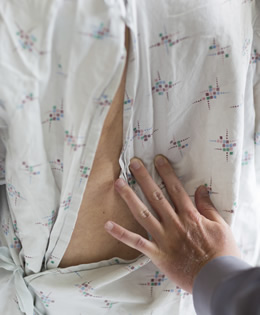Spinal Stenosis

Spinal stenosis is narrowing of the spine, usually because of age. It’s one of the most common spine conditions in older adults. Timely treatment is important because spinal stenosis tends to worsen over time.
The narrowing leaves less room for the spinal cord or nerves. Spinal discs, joints or bone spurs can press on the spinal cord or nerves, causing pain, weakness and other symptoms.
Causes
Spinal stenosis is usually caused by changes in the spine because of aging, including:
- Spinal disc changes
- Arthritis in the spinal joints
- Spinal bone spurs caused by arthritis in the joints
- Enlarged spinal ligaments caused by bone spurs
Symptoms
Spinal stenosis can occur in the cervical spine (upper back), which is called cervical stenosis, or lumbar spine (lower back), which is called lumbar stenosis. Symptoms include stooping and loss of mobility.
Cervical stenosis symptoms
- Pain in the neck or shoulders
- Numbness in your hands
- Inability to use arms or legs
- Paralysis
Lumbar stenosis symptoms
- Pain in the lower spine when walking
- Pain spreading down the back of the legs
- Pain that gets better if you sit down or lean against something
- Numbness and tingling in your legs
Nonsurgical treatment
Mild or moderate symptoms can often be treated without surgery, an approach the OHSU Spine Center favors whenever possible.
- Physical therapy: A physical therapist can offer treatments and exercises to ease pain and movement.
Minimally invasive treatment
- Epidural steroid injections: Injections can treat pain caused by pressure on spinal nerves.
Surgical treatments
Surgery may be recommended if your spinal stenosis is severe, if other treatments don’t ease your pain, or if pain and weakness limit your mobility.
- Laminotomy/laminectomy: This surgical procedure removes part of a spinal bone called the lamina to relieve pressure on nerves or the spinal cord.
- Laminaplasty: This surgical procedure involves scoring and cutting the lamina to create more room for the spinal cord and nerve roots, relieving pressure and pain.
- Spinal fusion: This surgery permanently joins two or more bones (vertebrae) in the spine for more stability.